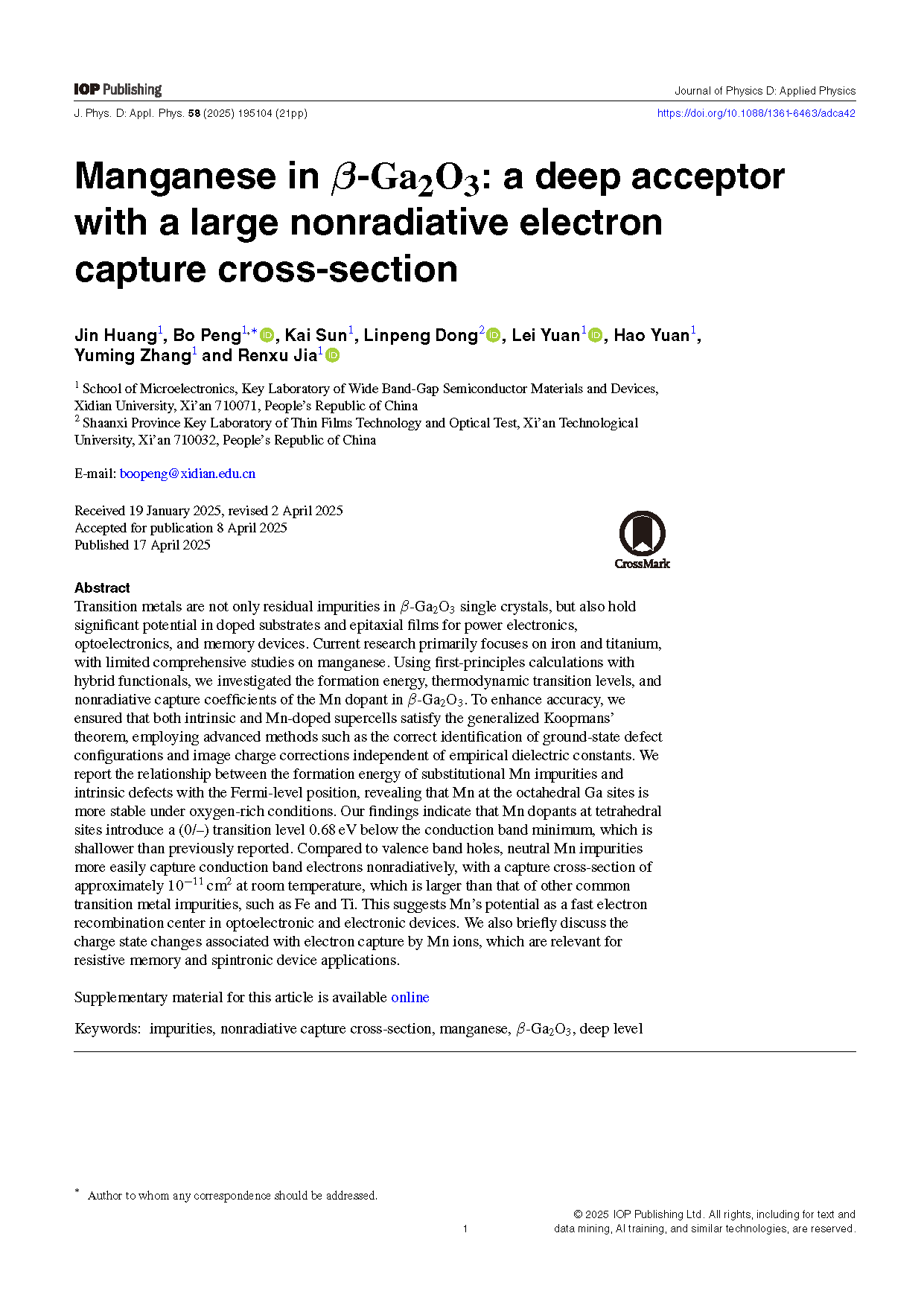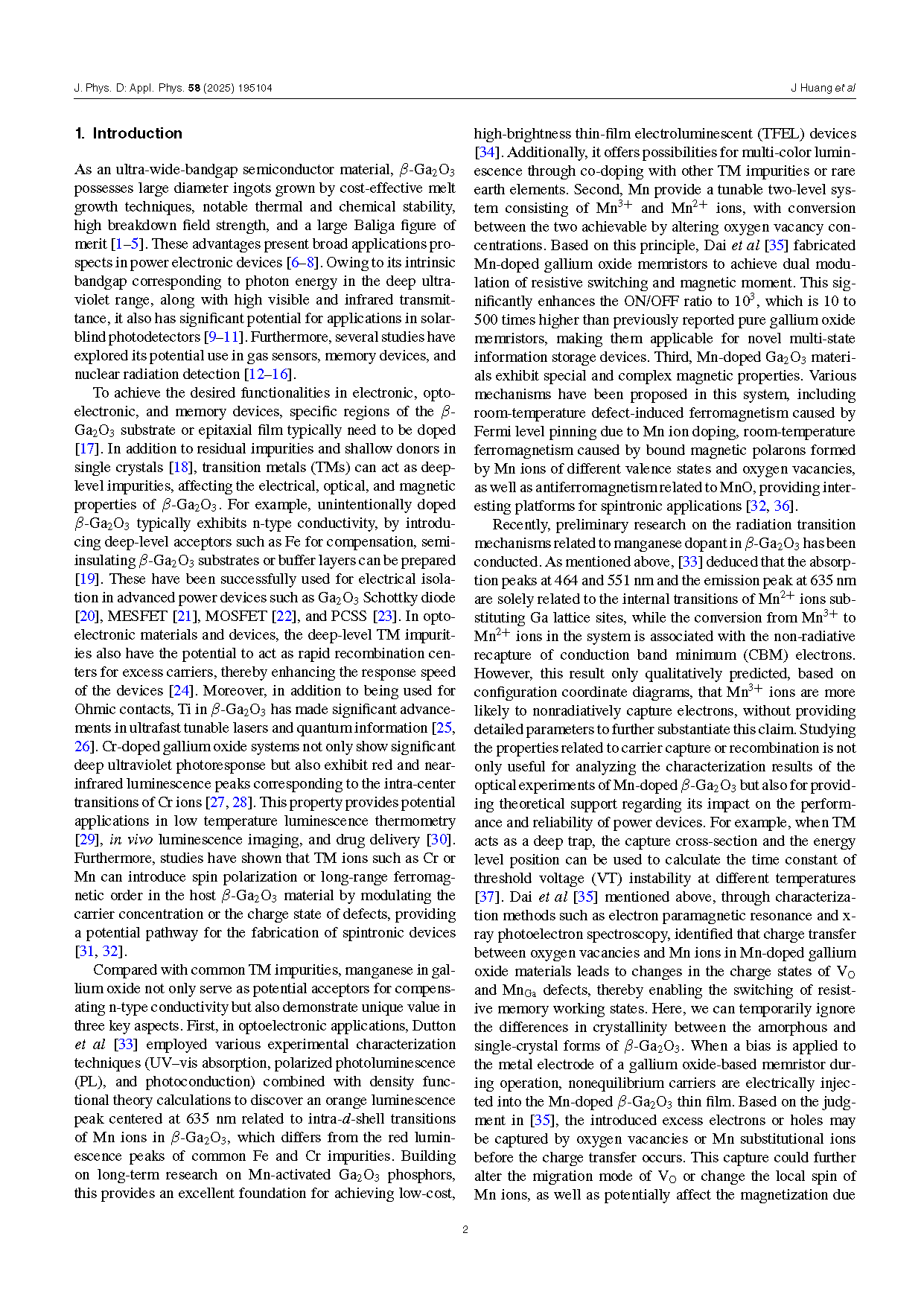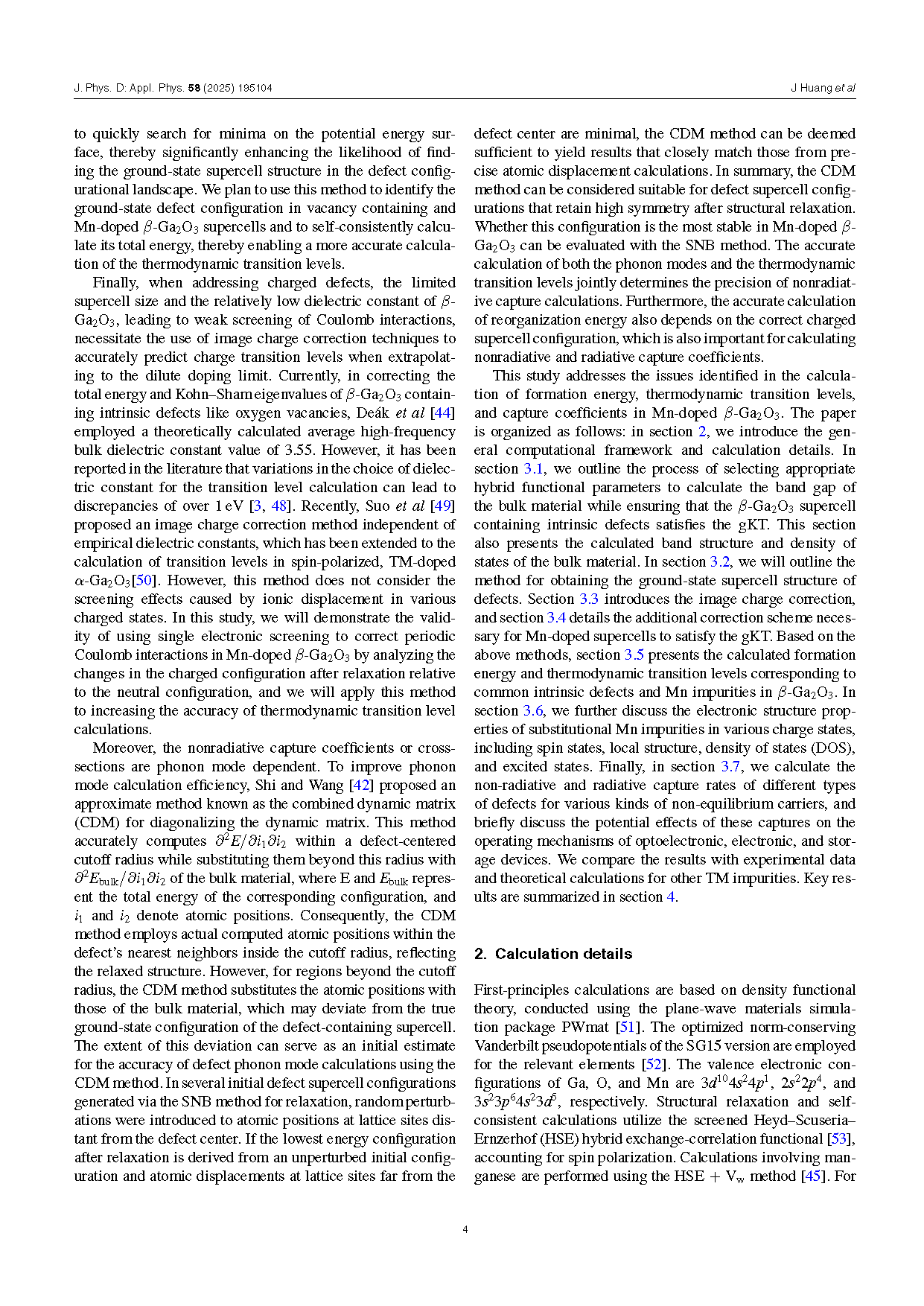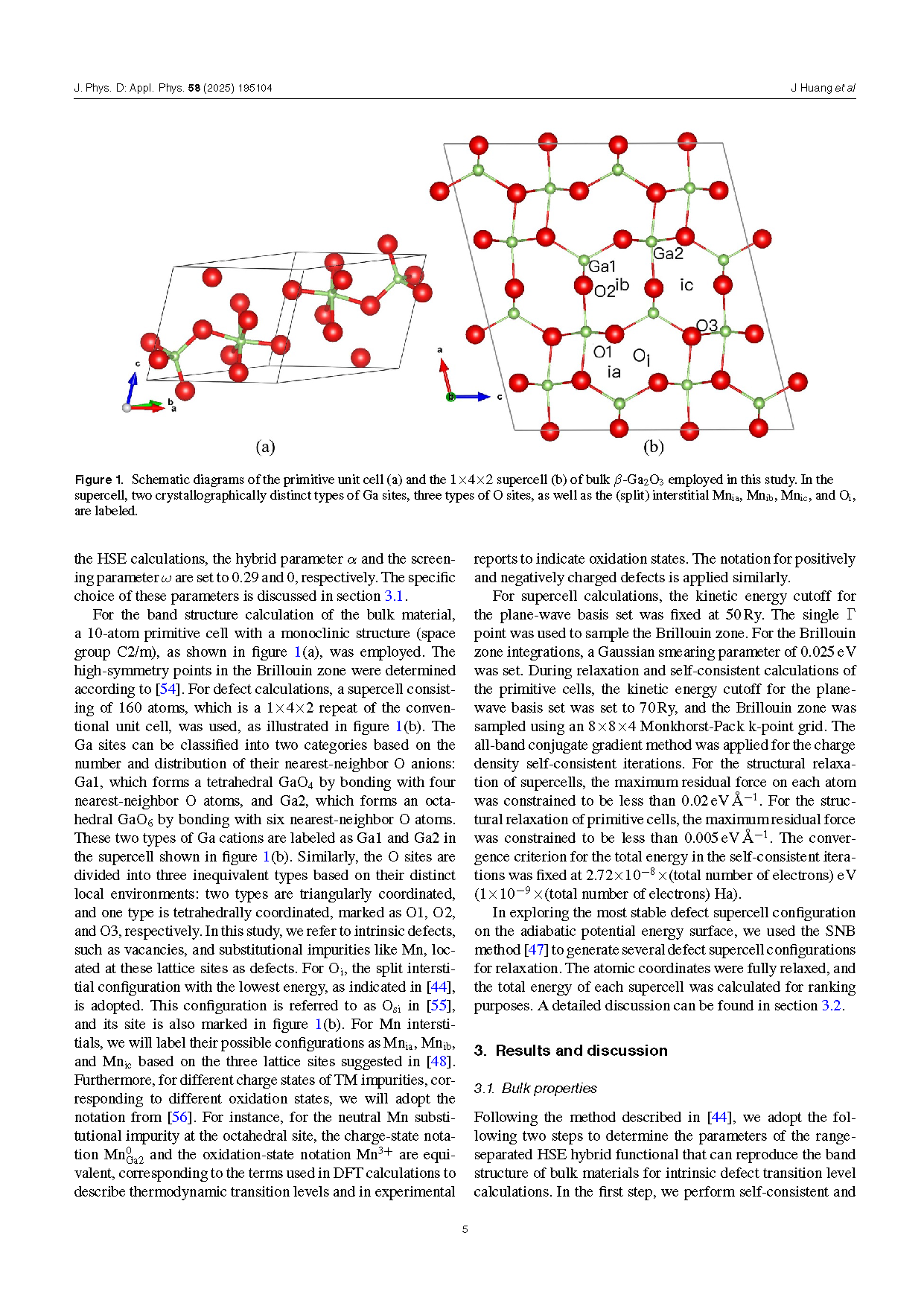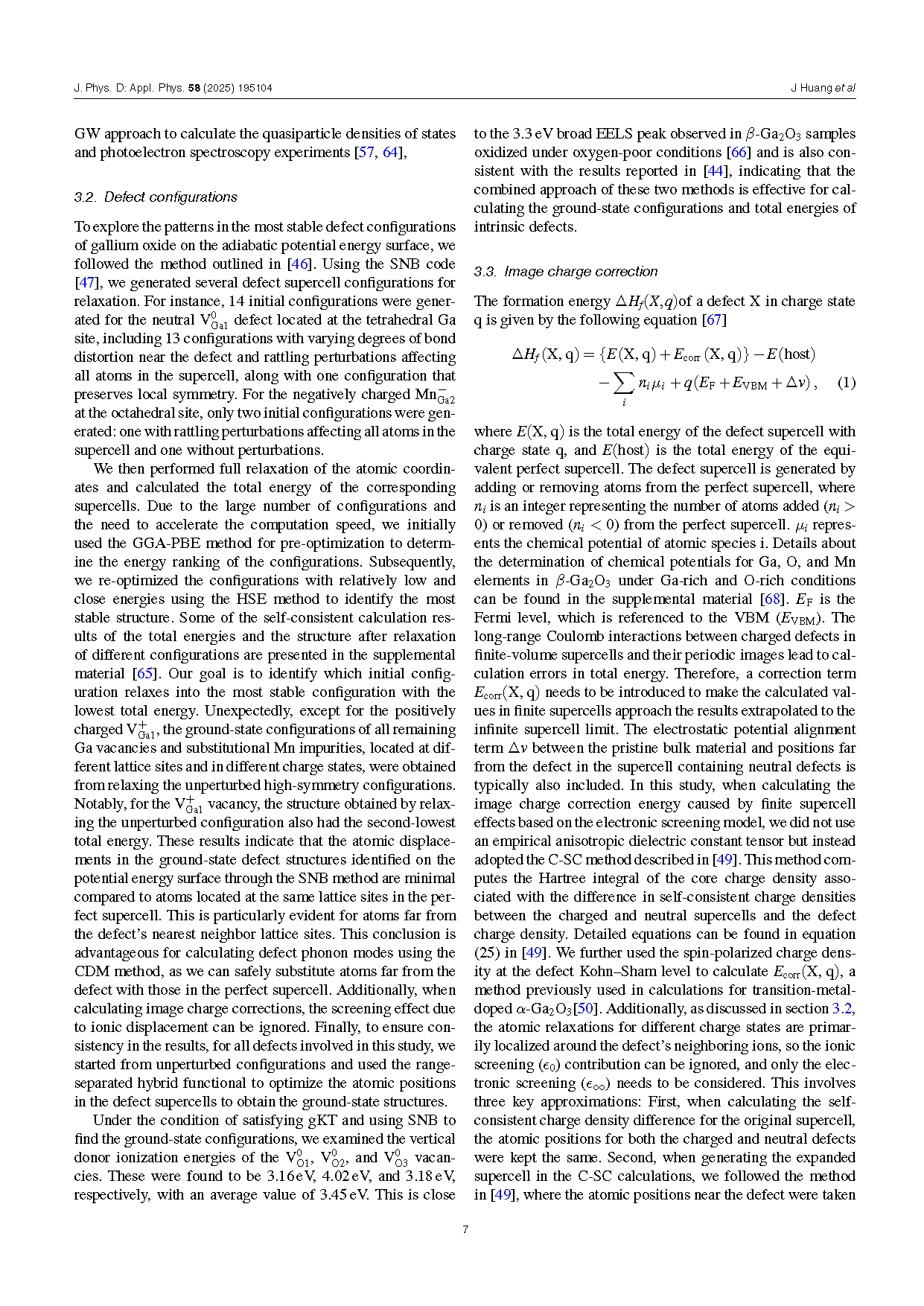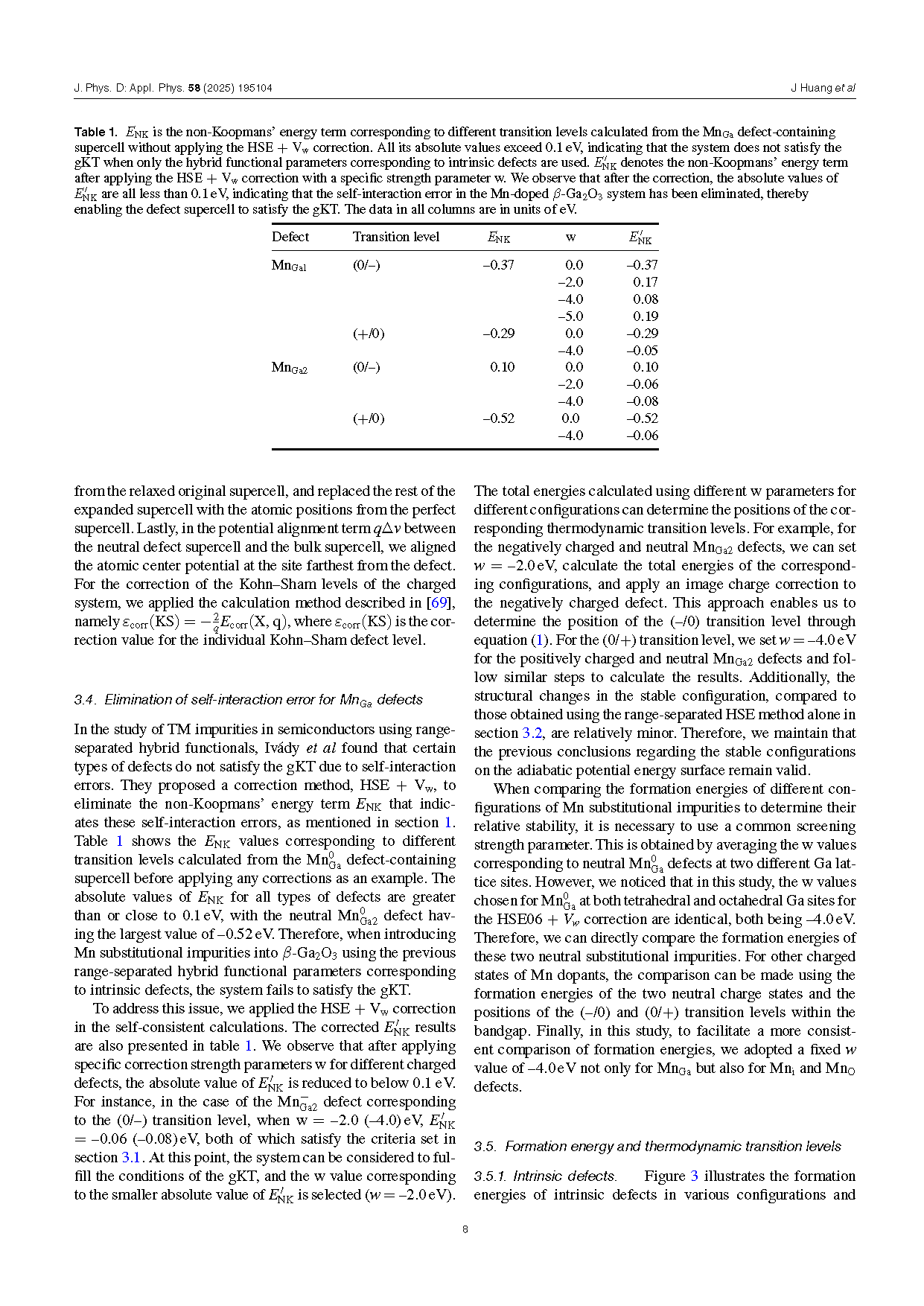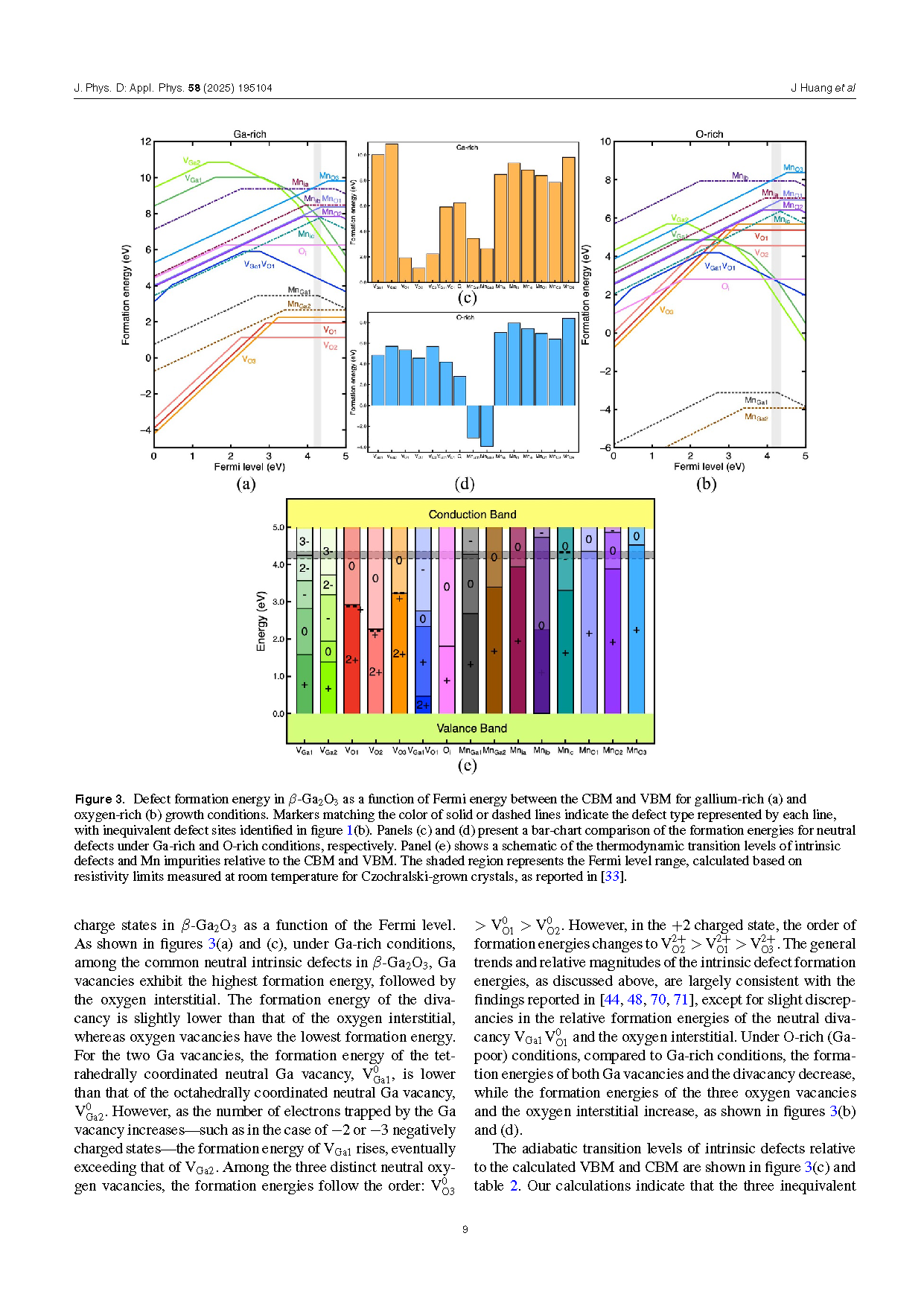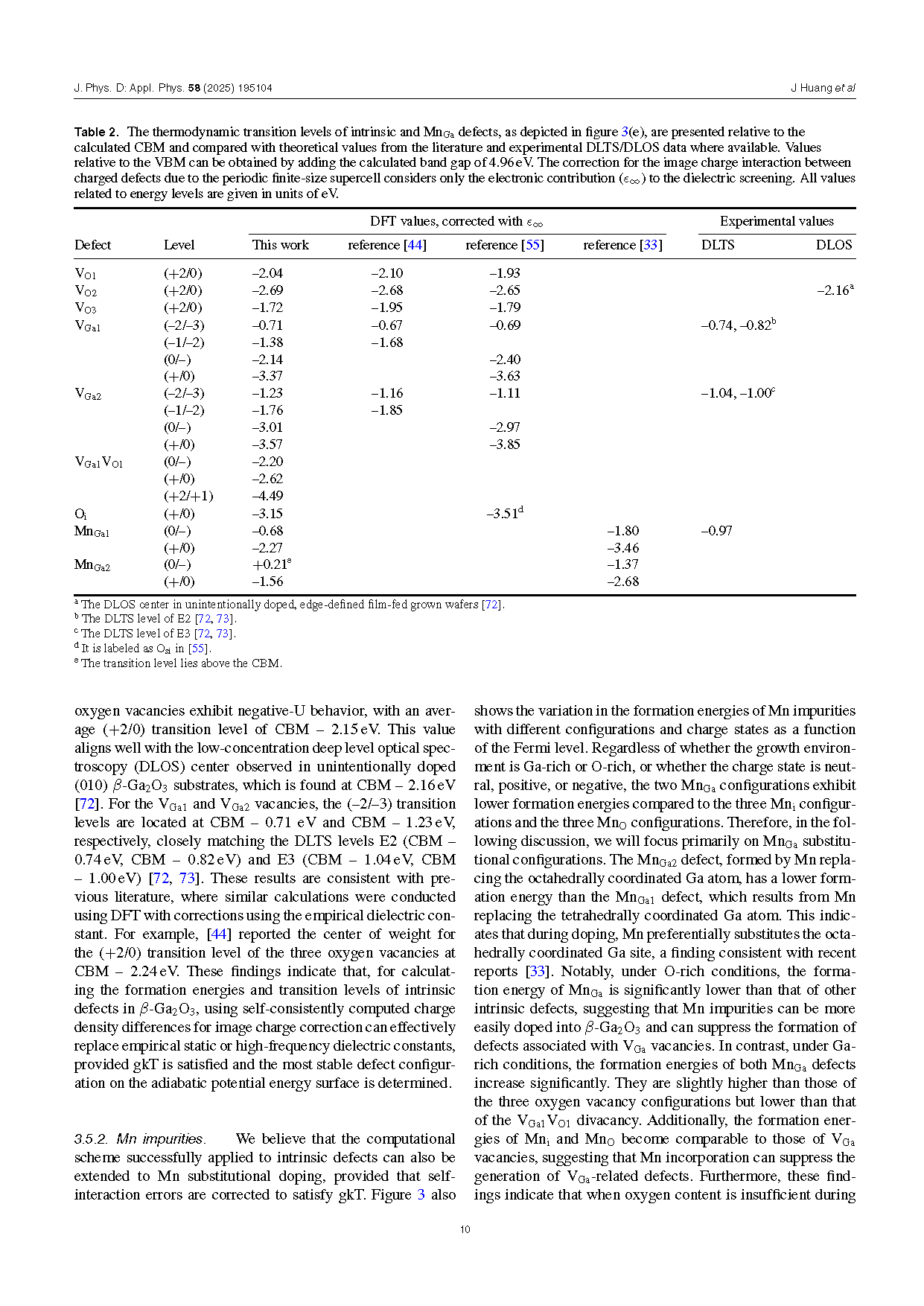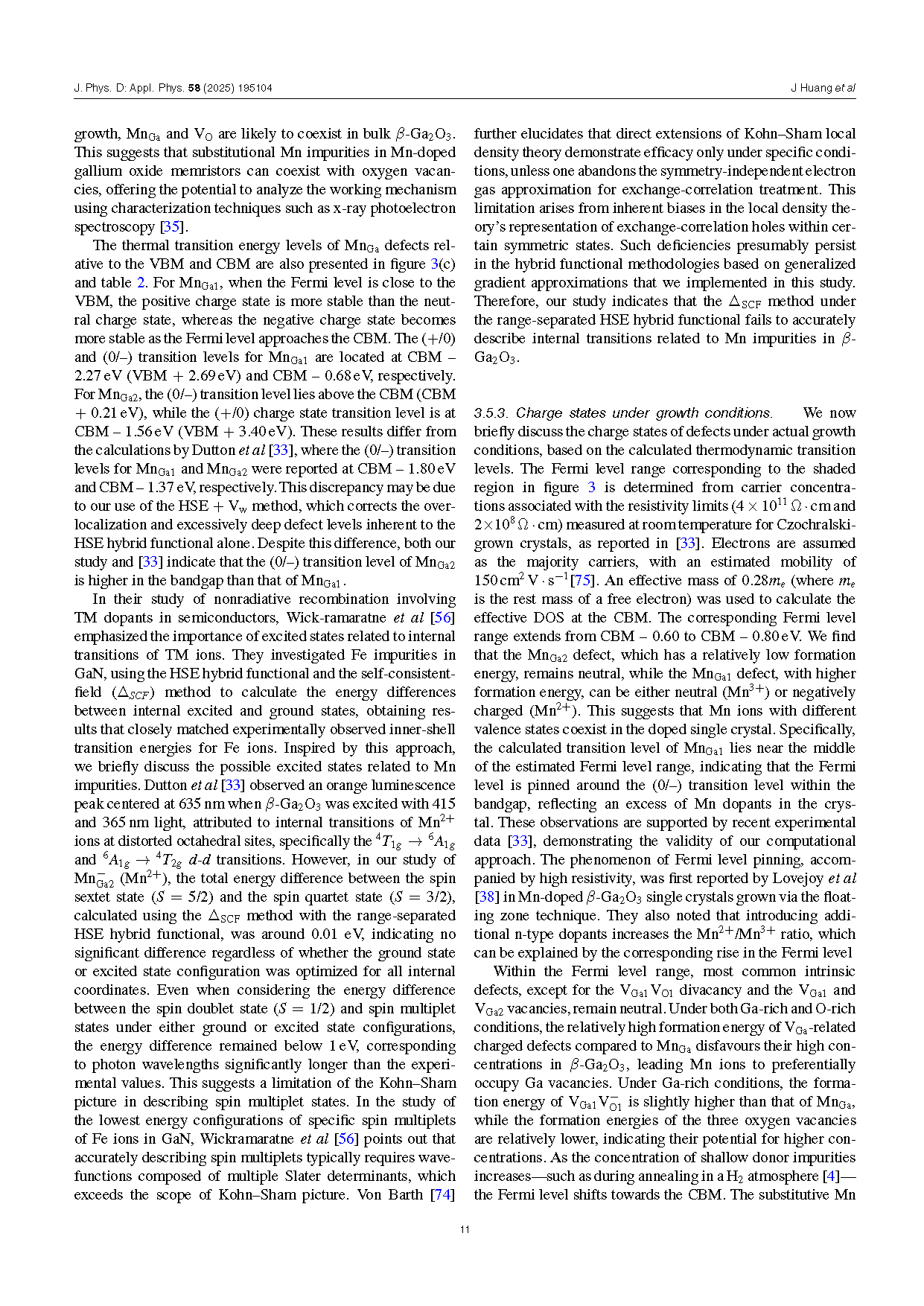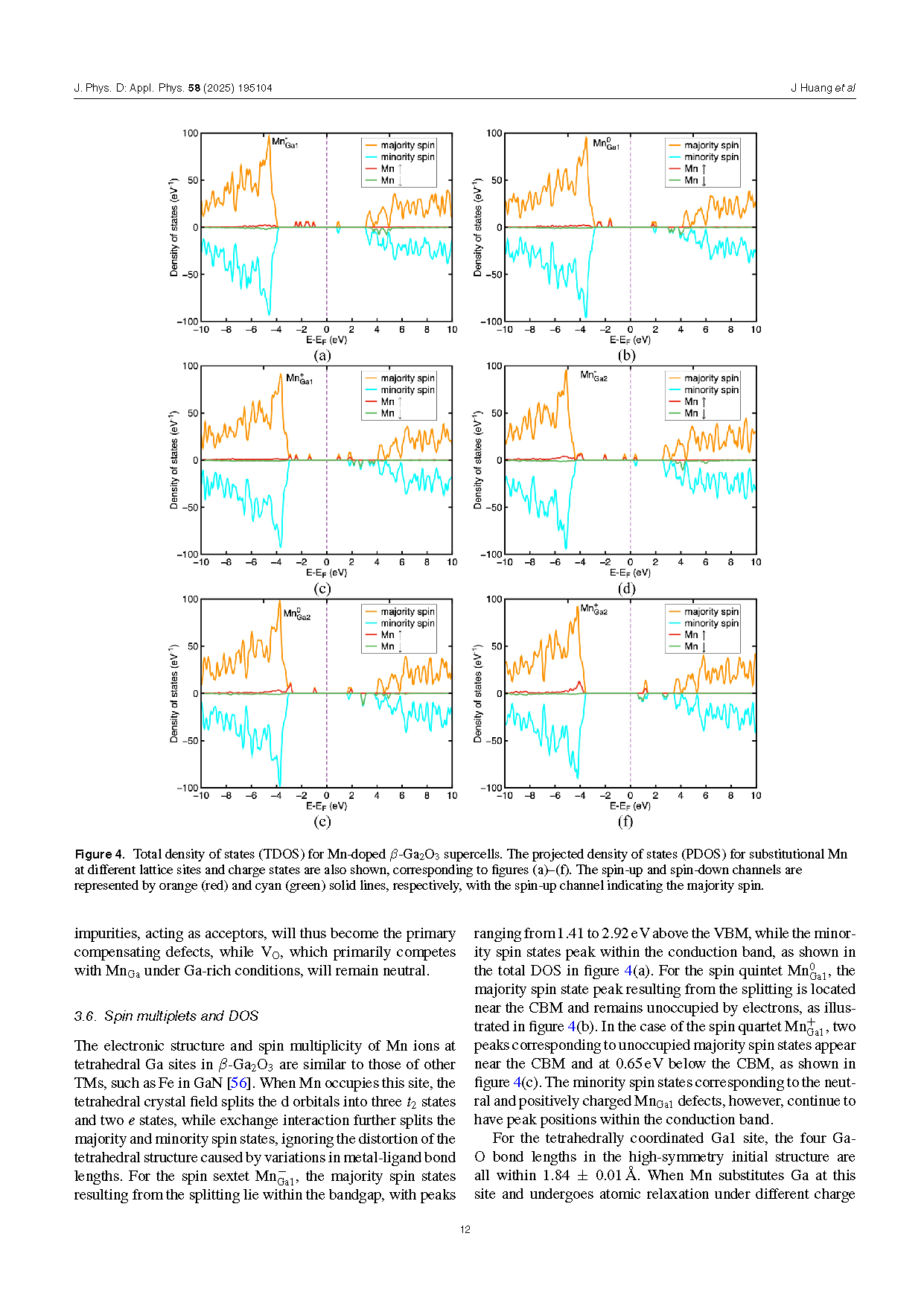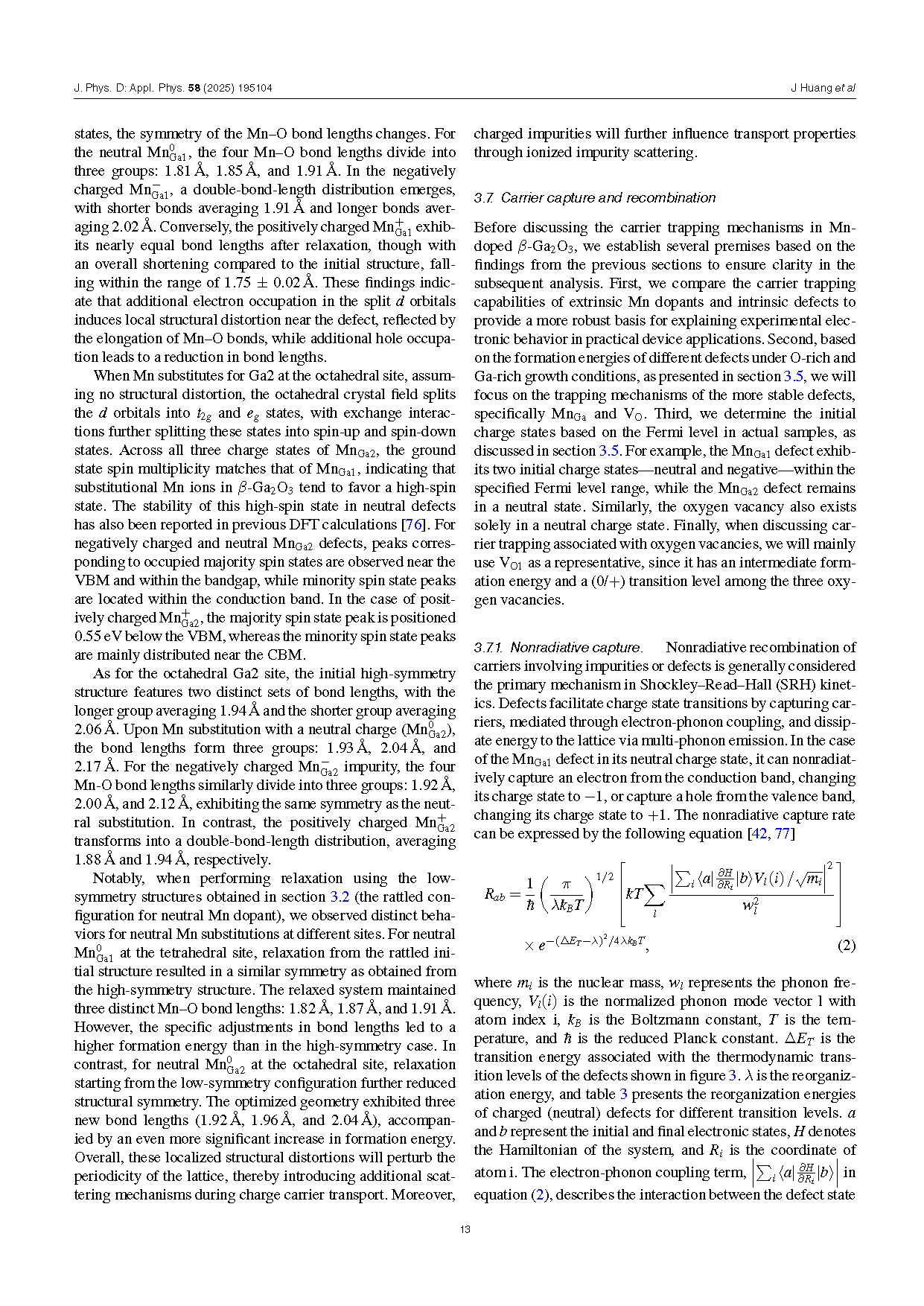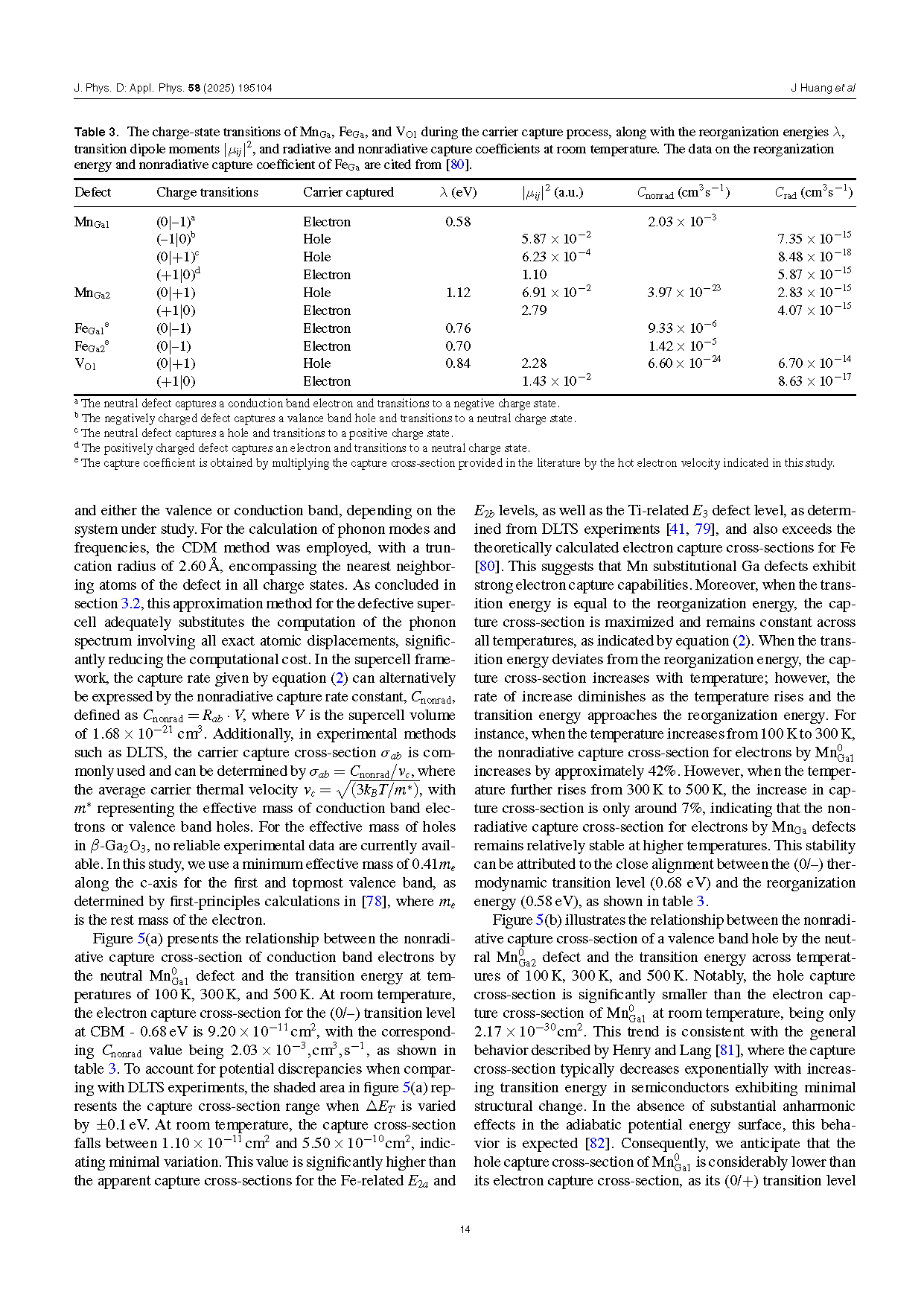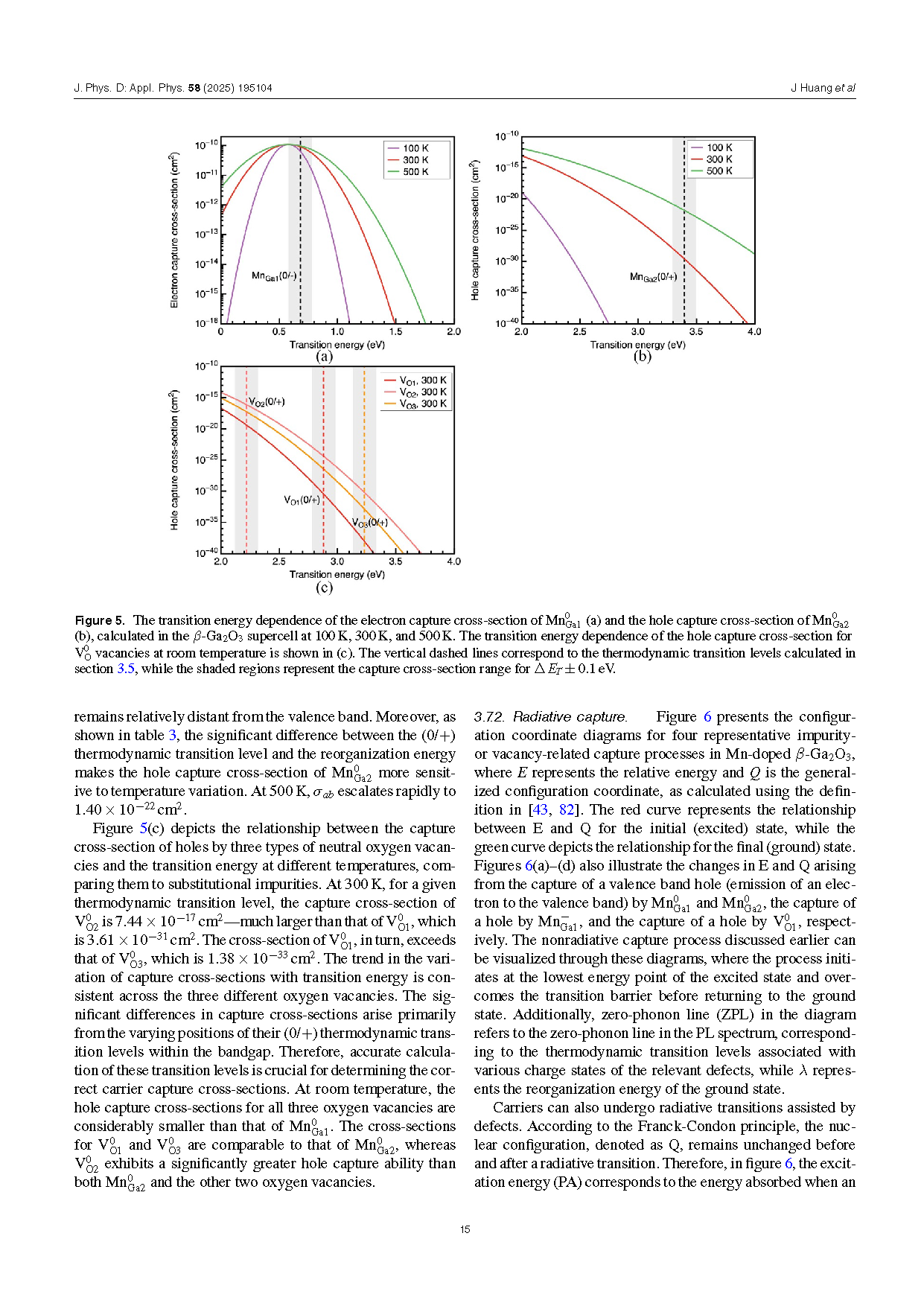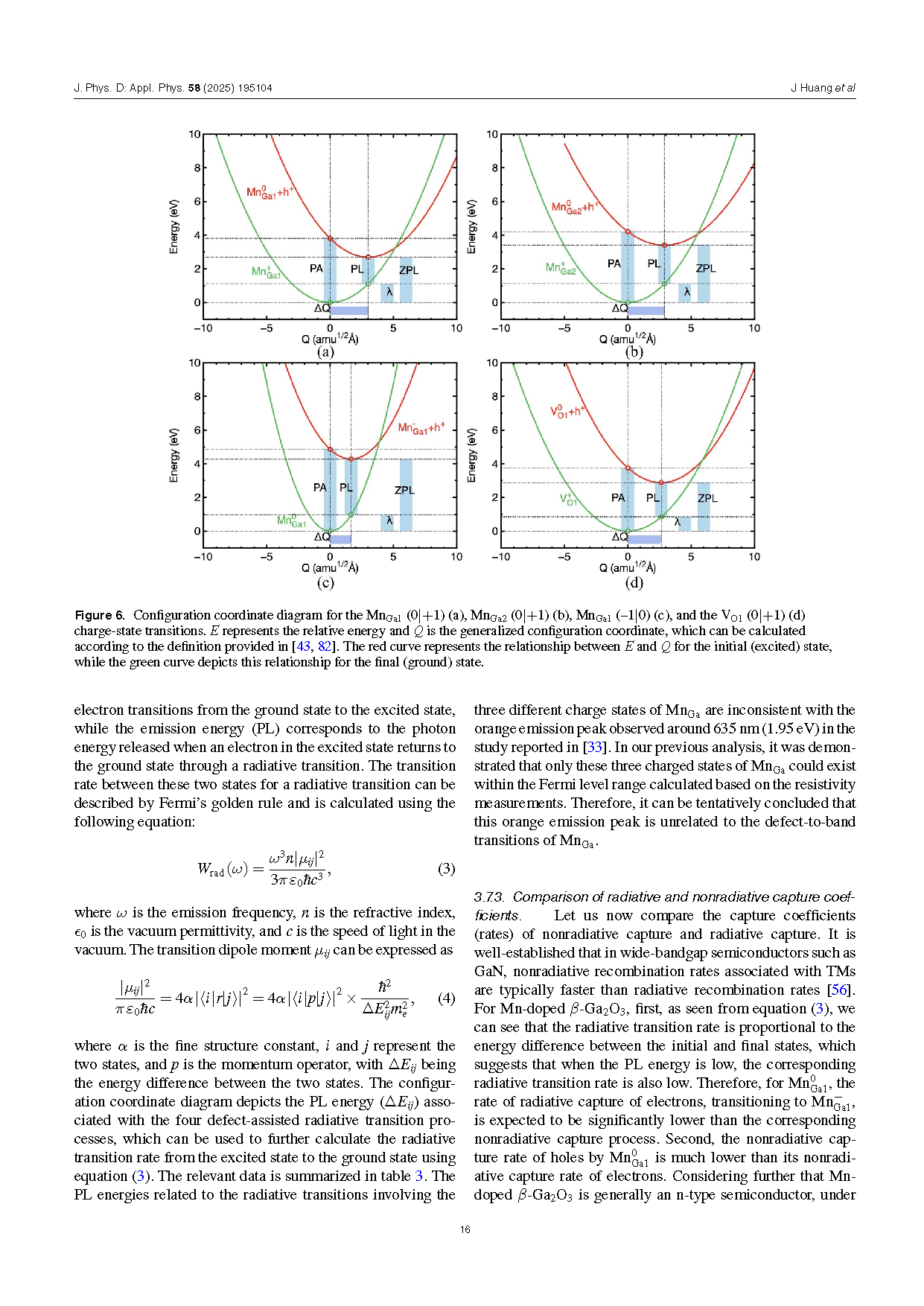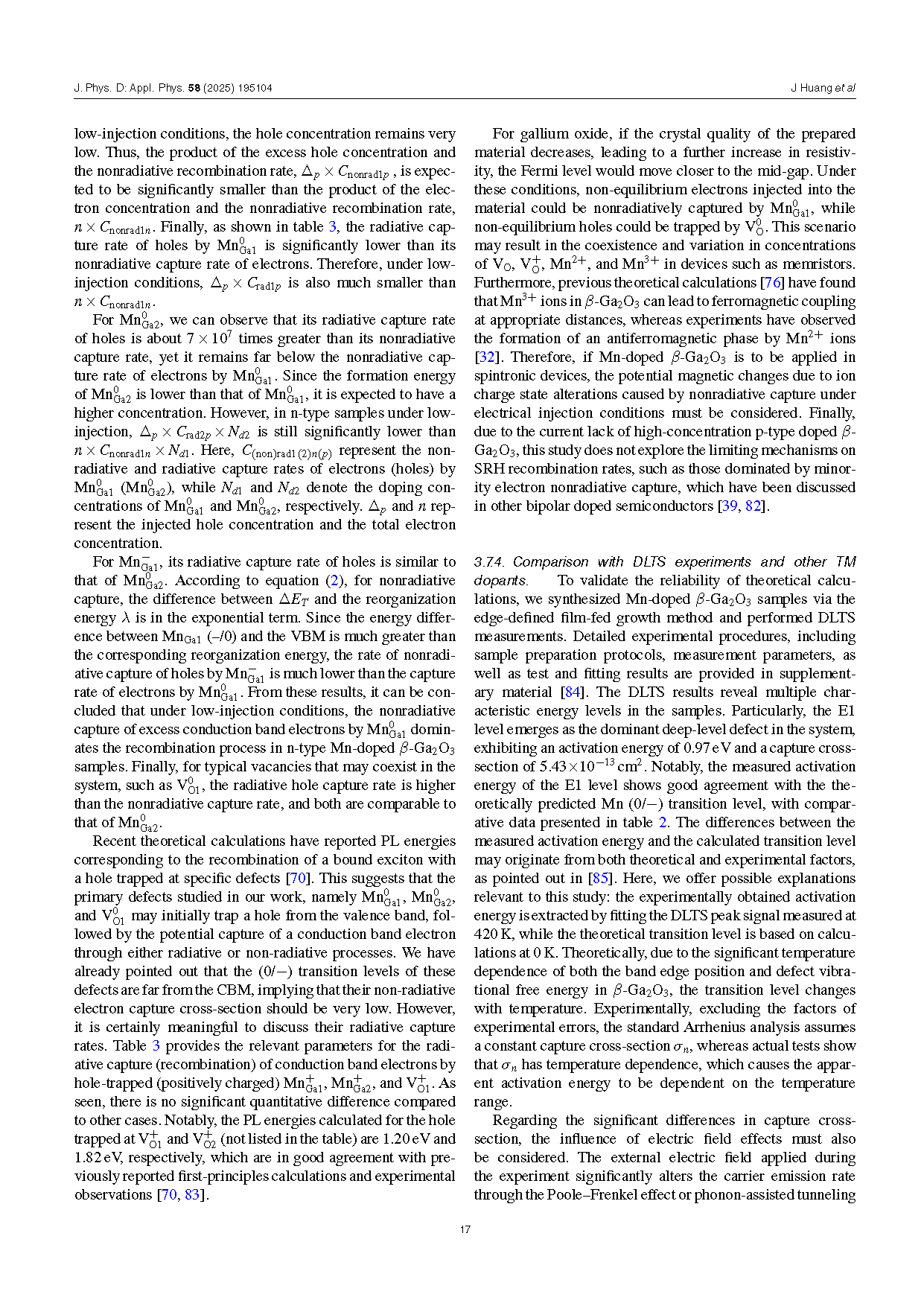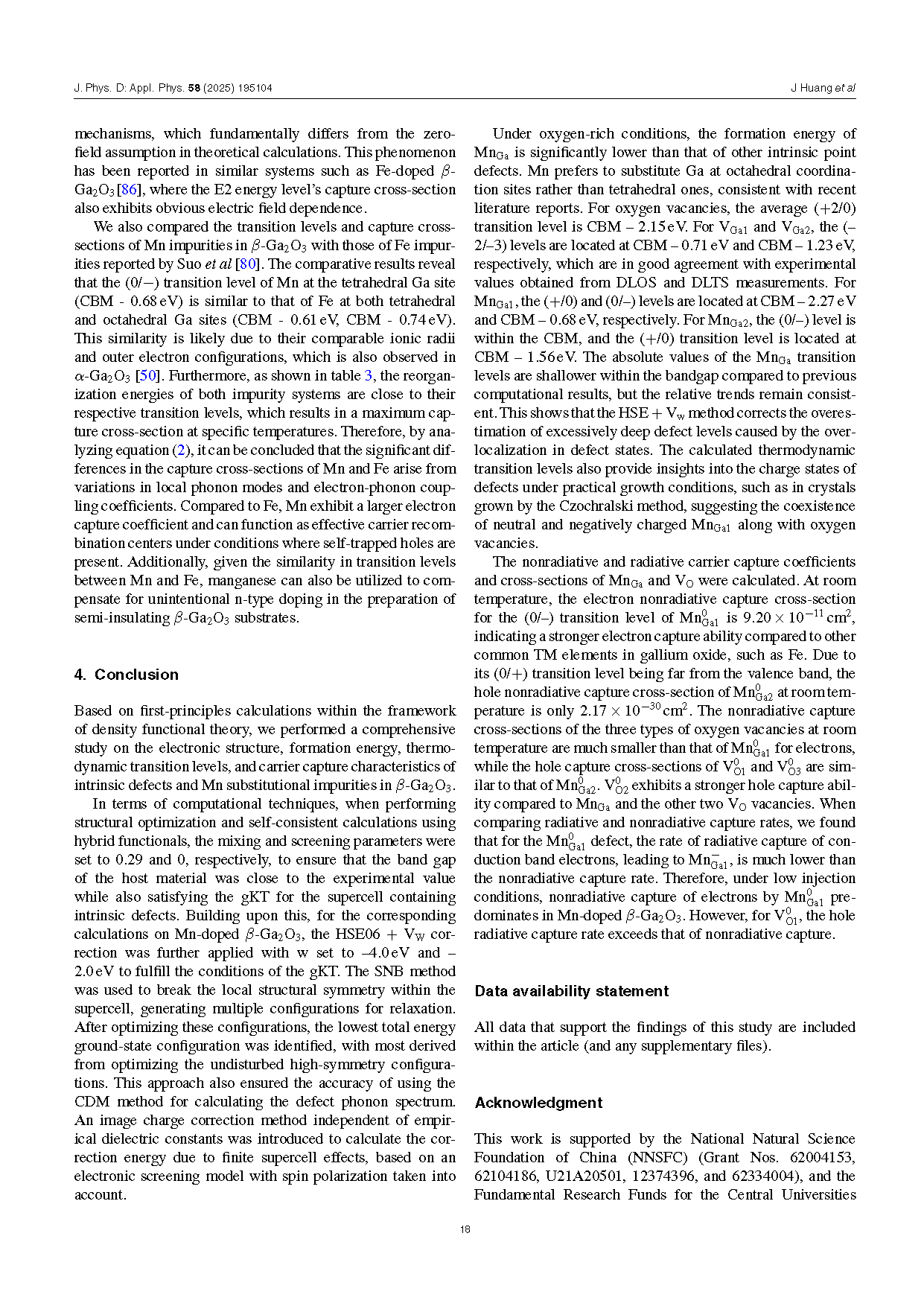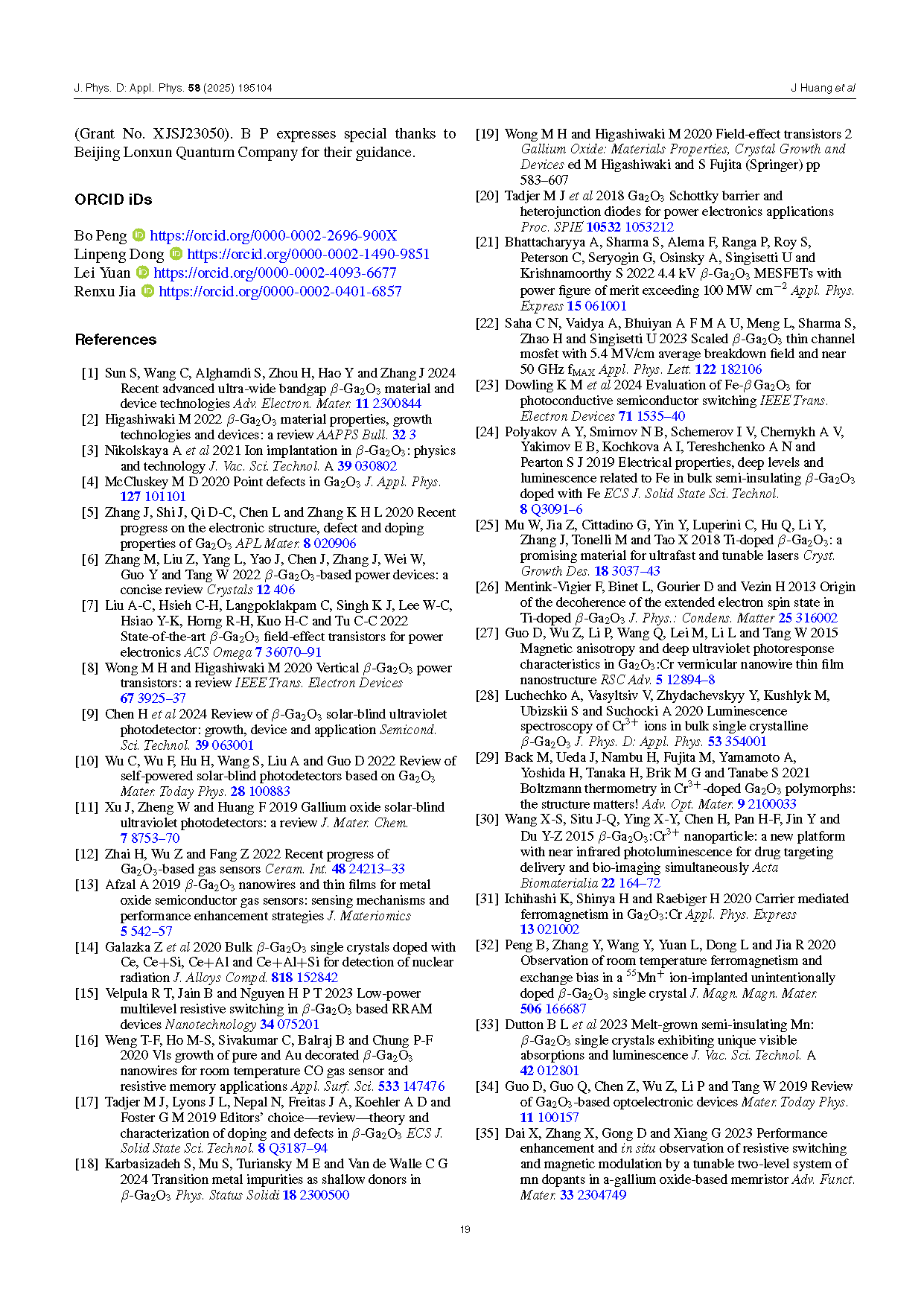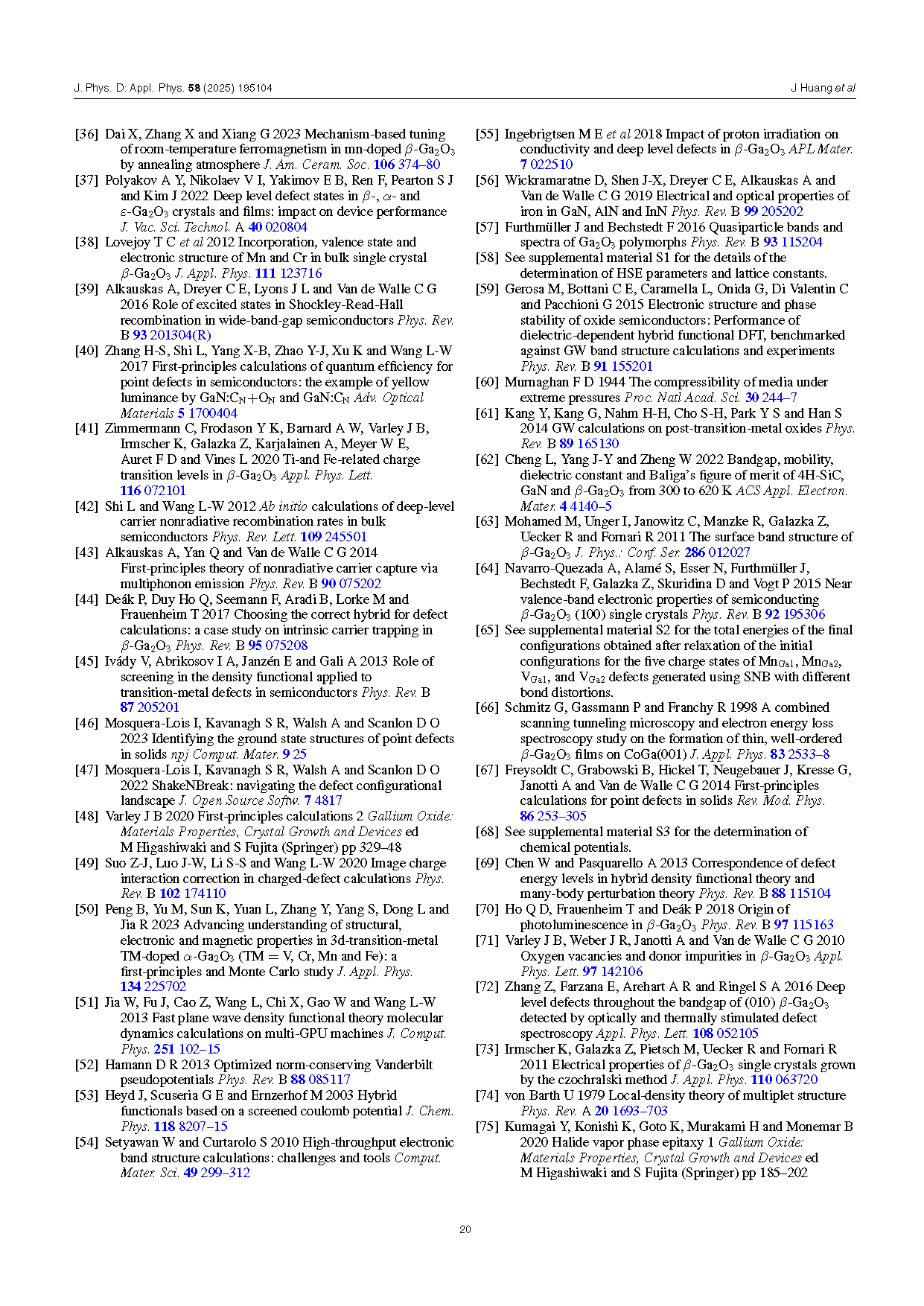
【Member Papers】Xidian University---Manganese in β-Ga₂O₃: a deep acceptor with a large nonradiative electron capture cross-section
日期:2025-05-12阅读:372
Researchers from the Xidian University have published a dissertation titled "Manganese in β-Ga2O3: a deep acceptor with a large nonradiative electron capture cross-section" in Journal of Physics D: Applied Physics.
Acknowledgment
This work is supported by the National Natural Science Foundation of China (NNSFC) (Grant Nos. 62004153, 62104186, U21A20501, 12374396, and 62334004), and the Fundamental Research Funds for the Central Universities (Grant No. XJSJ23050). B P expresses special thanks to Beijing Lonxun Quantum Company for their guidance.
Background
As an ultra-wide-bandgap semiconductor material, β-Ga2O3 possesses large diameter ingots grown by cost-effective melt growth techniques, notable thermal and chemical stability, high breakdown field strength, and a large Baliga figure of merit. These advantages present broad applications prospects in power electronic devices. Owing to its intrinsic bandgap corresponding to photon energy in the deep ultraviolet range, along with high visible and infrared transmittance, it also has significant potential for applications in solar-blind photodetectors. Furthermore, several studies have explored its potential use in gas sensors, memory devices, and nuclear radiation detection.
Abstract
Transition metals are not only residual impurities in β-Ga2O3 single crystals, but also hold significant potential in doped substrates and epitaxial films for power electronics, optoelectronics, and memory devices. Current research primarily focuses on iron and titanium, with limited comprehensive studies on manganese. Using first-principles calculations with hybrid functionals, we investigated the formation energy, thermodynamic transition levels, and nonradiative capture coefficients of the Mn dopant in β-Ga2O3. To enhance accuracy, we ensured that both intrinsic and Mn-doped supercells satisfy the generalized Koopmans' theorem, employing advanced methods such as the correct identification of ground-state defect configurations and image charge corrections independent of empirical dielectric constants. We report the relationship between the formation energy of substitutional Mn impurities and intrinsic defects with the Fermi-level position, revealing that Mn at the octahedral Ga sites is more stable under oxygen-rich conditions. Our findings indicate that Mn dopants at tetrahedral sites introduce a (0/–) transition level 0.68 eV below the conduction band minimum, which is shallower than previously reported. Compared to valence band holes, neutral Mn impurities more easily capture conduction band electrons nonradiatively, with a capture cross-section of approximately 10−11 cm2 at room temperature, which is larger than that of other common transition metal impurities, such as Fe and Ti. This suggests Mn's potential as a fast electron recombination center in optoelectronic and electronic devices. We also briefly discuss the charge state changes associated with electron capture by Mn ions, which are relevant for resistive memory and spintronic device applications.
Summary
Based on first-principles calculations within the framework of density functional theory, we performed a comprehensive study on the electronic structure, formation energy, thermodynamic transition levels, and carrier capture characteristics of intrinsic defects and Mn substitutional impurities in β-Ga2O3.
In terms of computational techniques, when performing structural optimization and self-consistent calculations using hybrid functionals, the mixing and screening parameters were set to 0.29 and 0, respectively, to ensure that the band gap of the host material was close to the experimental value while also satisfying the gKT for the supercell containing intrinsic defects. Building upon this, for the corresponding calculations on Mn-doped β-Ga2O3, the HSE06 + VW correction was further applied with w set to –4.0 eV and –2.0 eV to fulfill the conditions of the gKT. The SNB method was used to break the local structural symmetry within the supercell, generating multiple configurations for relaxation. After optimizing these configurations, the lowest total energy ground-state configuration was identified, with most derived from optimizing the undisturbed high-symmetry configurations. This approach also ensured the accuracy of using the CDM method for calculating the defect phonon spectrum. An image charge correction method independent of empirical dielectric constants was introduced to calculate the correction energy due to finite supercell effects, based on an electronic screening model with spin polarization taken into account.
Graphic Examples
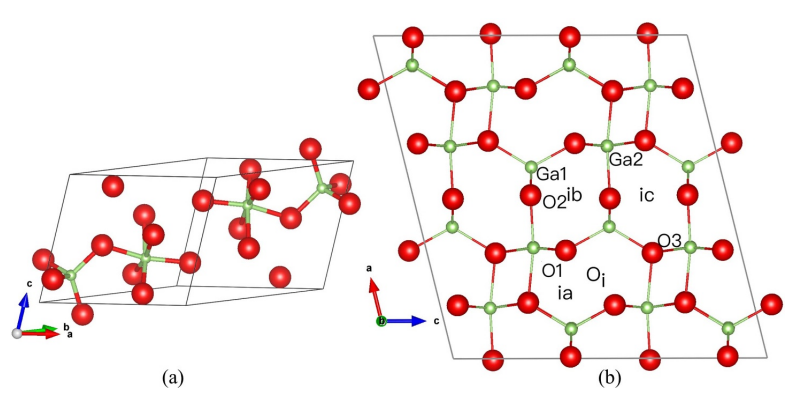
Figure 1. Schematic diagrams of the primitive unit cell (a) and the 1×4×2 supercell (b) of bulk β-Ga2O3 employed in this study. In the supercell, two crystallographically distinct types of Ga sites, three types of O sites, as well as the (split) interstitial Mnia, Mnib, Mnic, and Oi, are labeled.
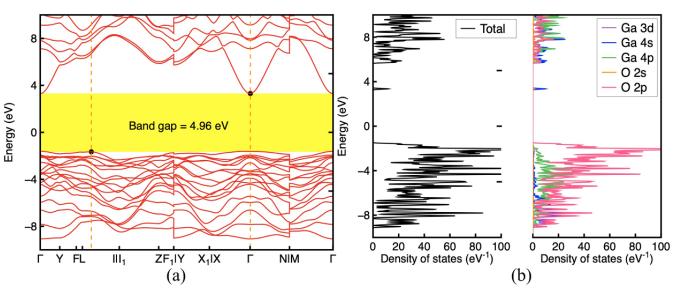
Figure 2. Electronic band structure (a) and density of states (b) of bulk β-Ga2O3 calculated using the range-separated HSE hybrid functional.
DOI:
doi.org/10.1088/1361-6463/adca42
